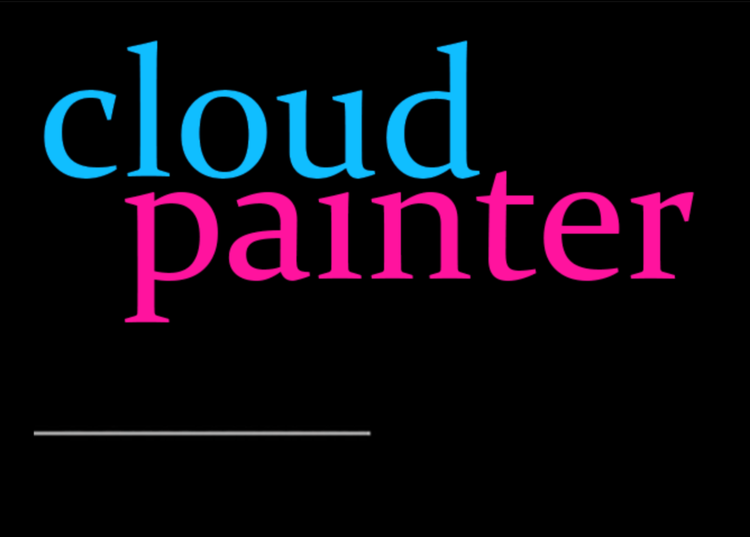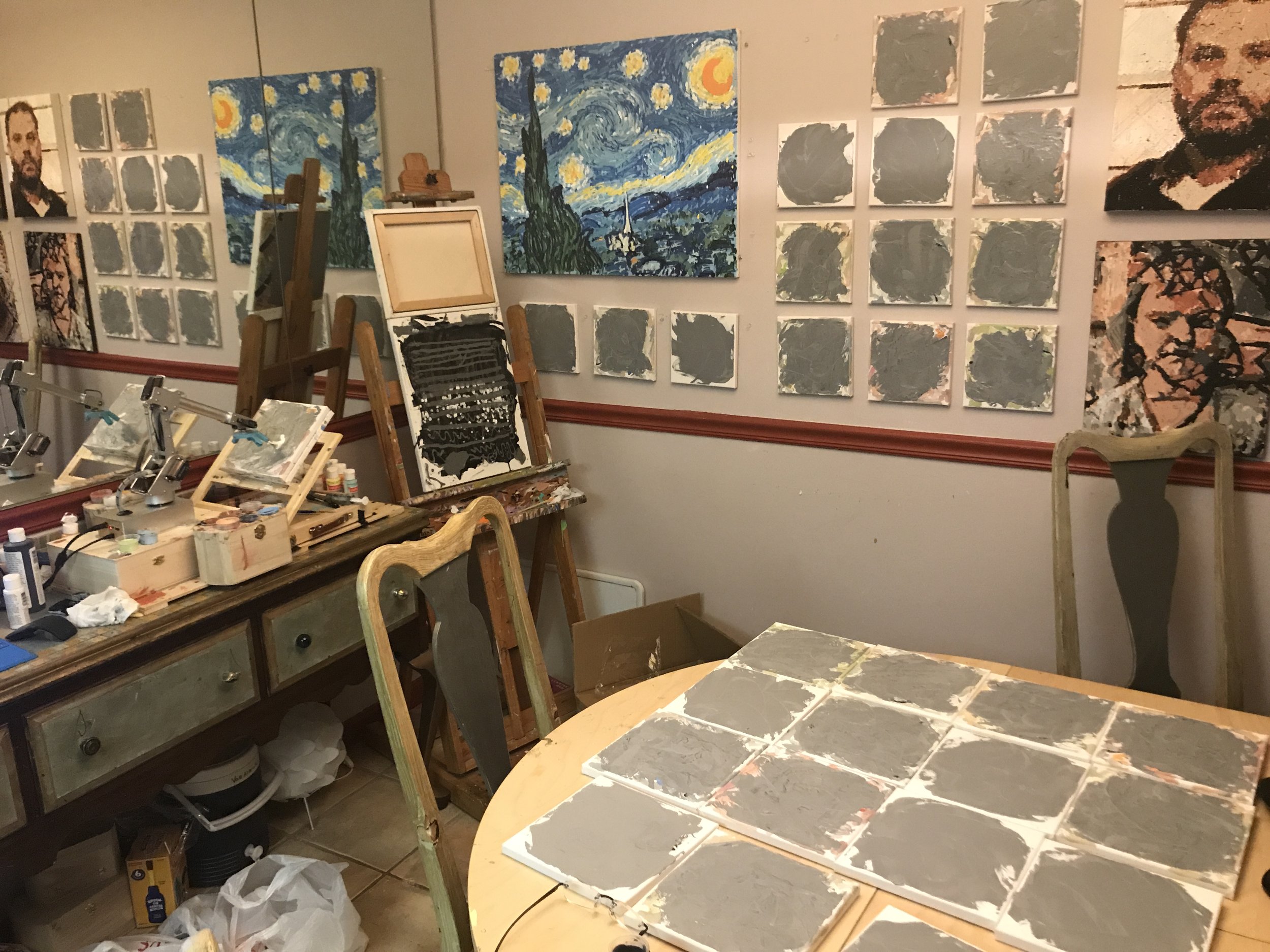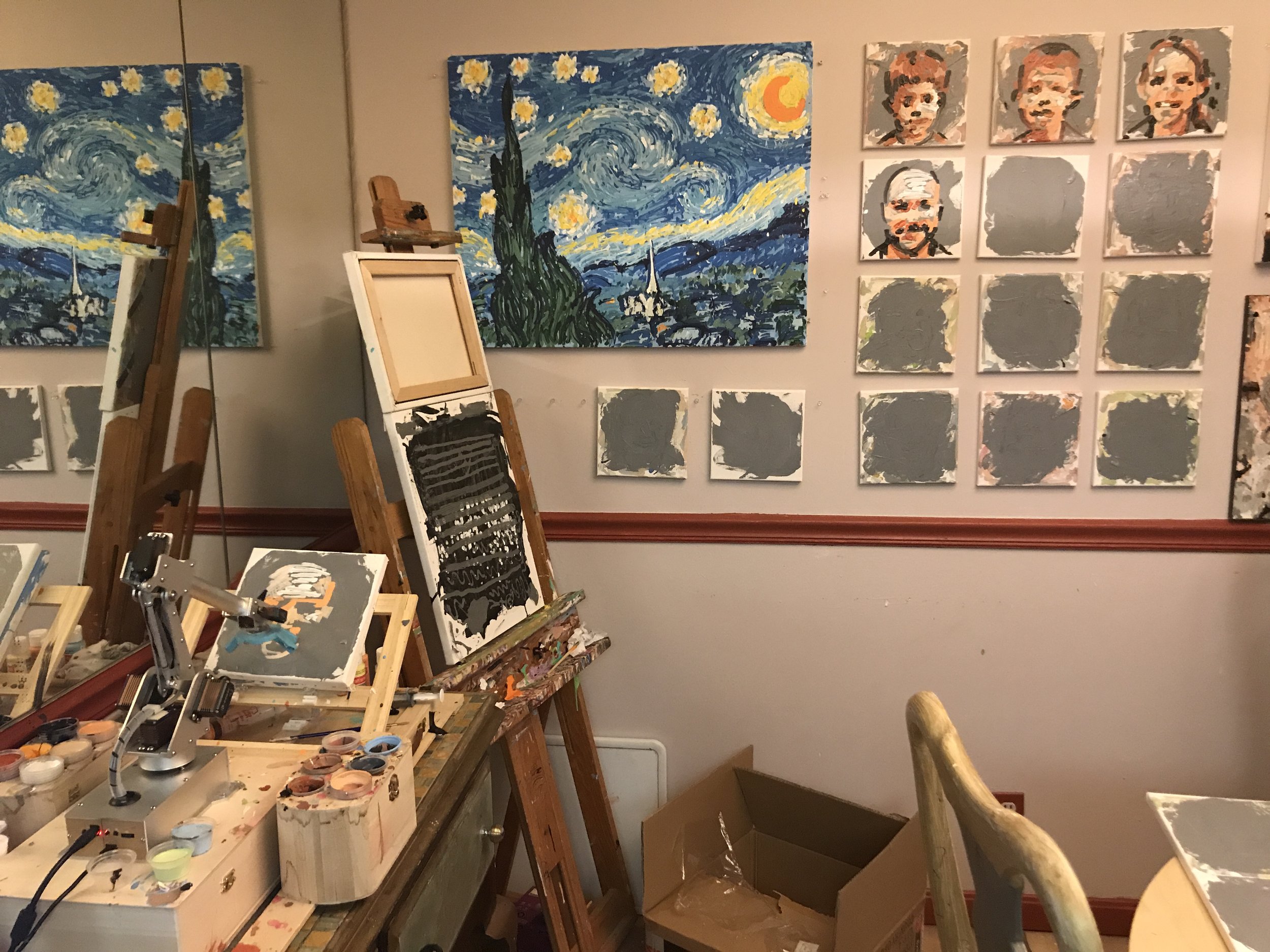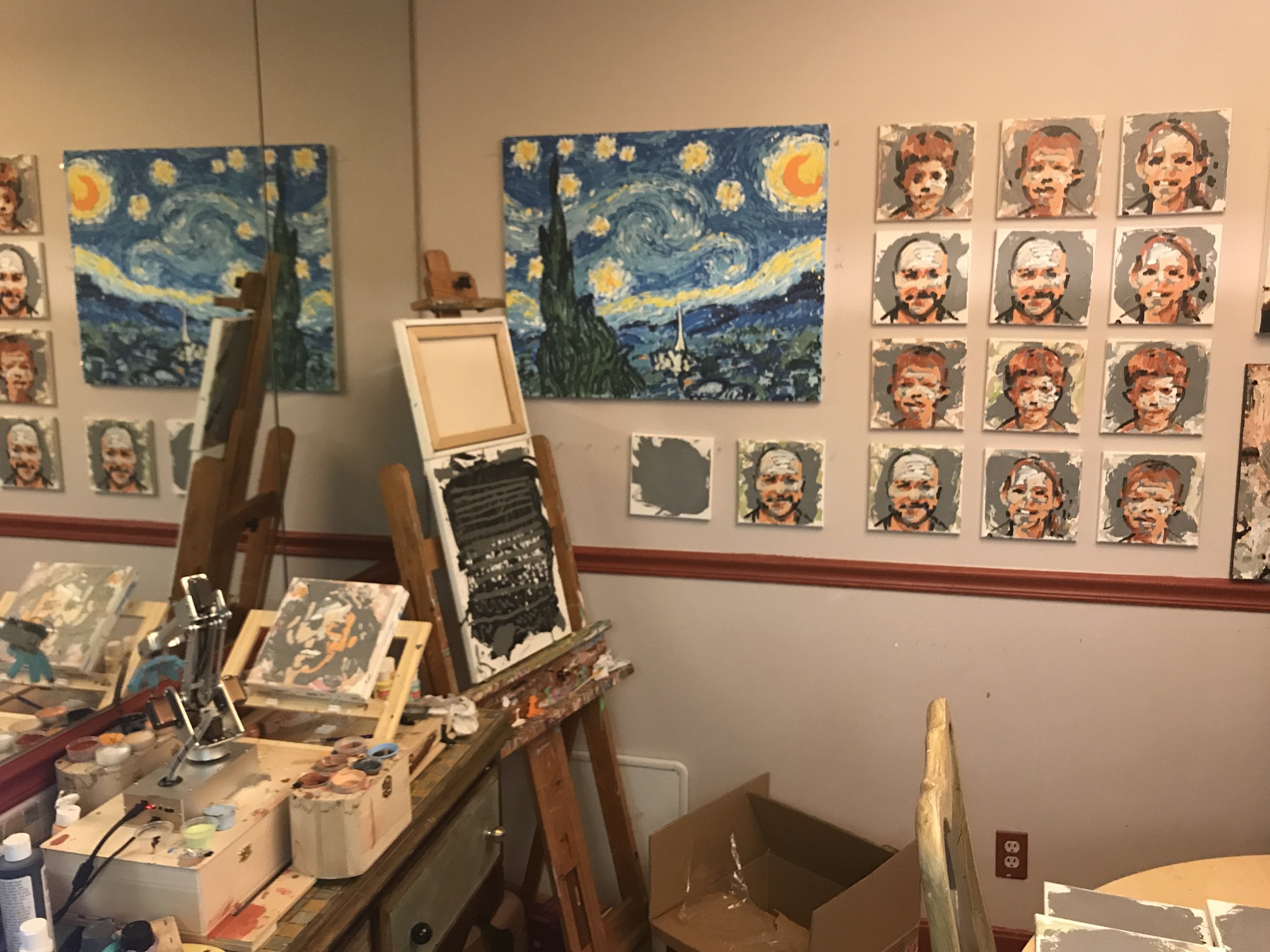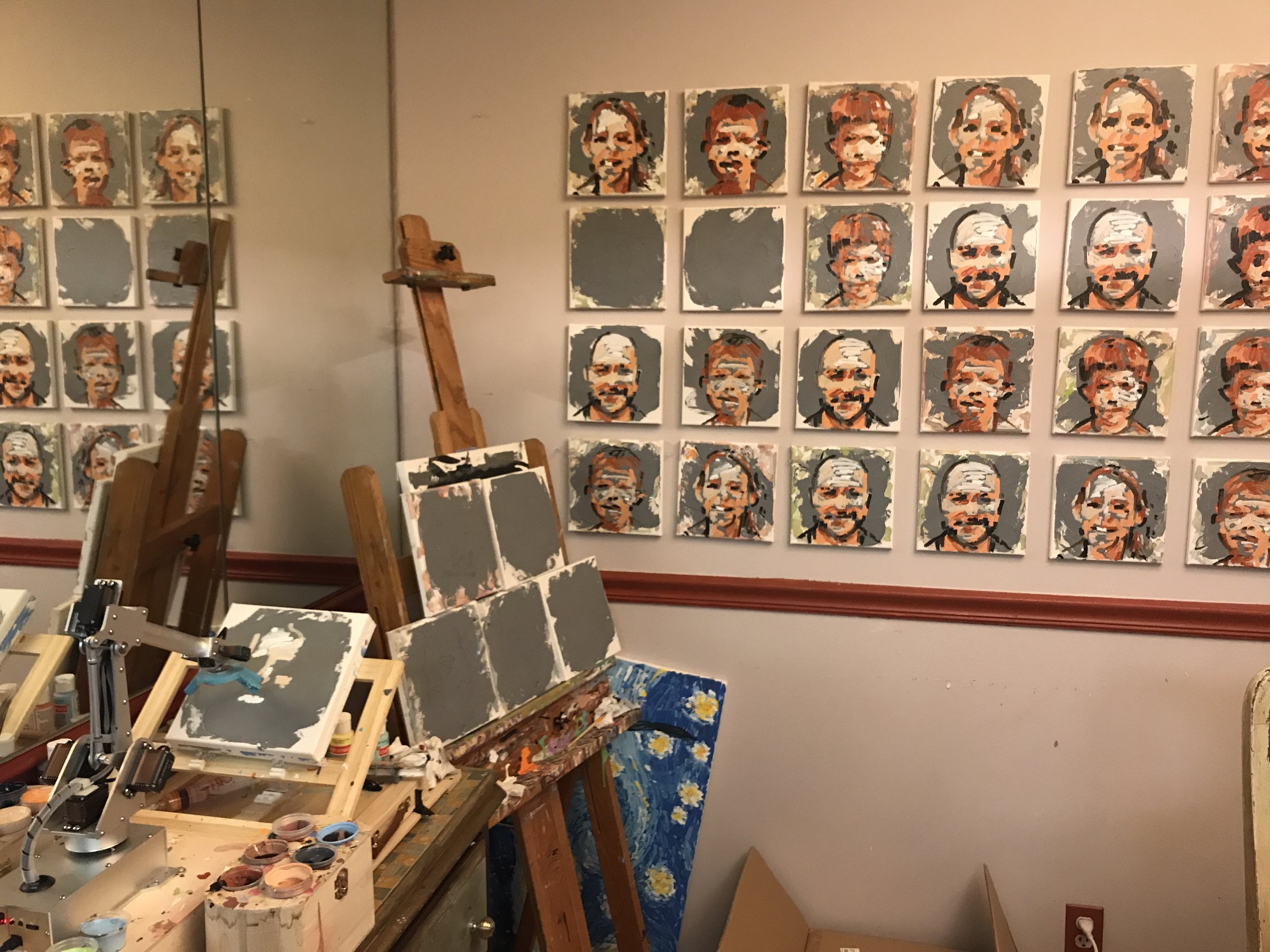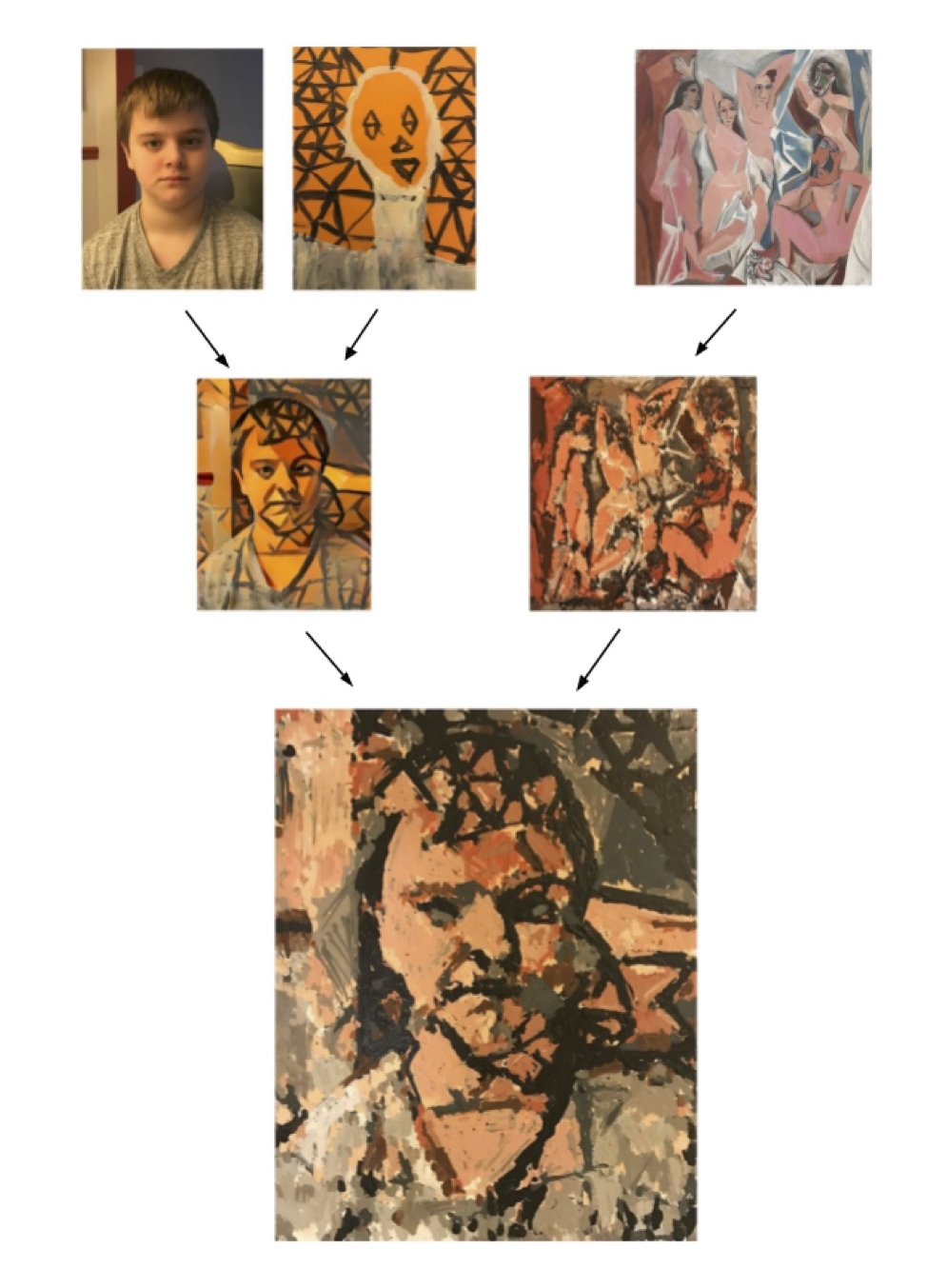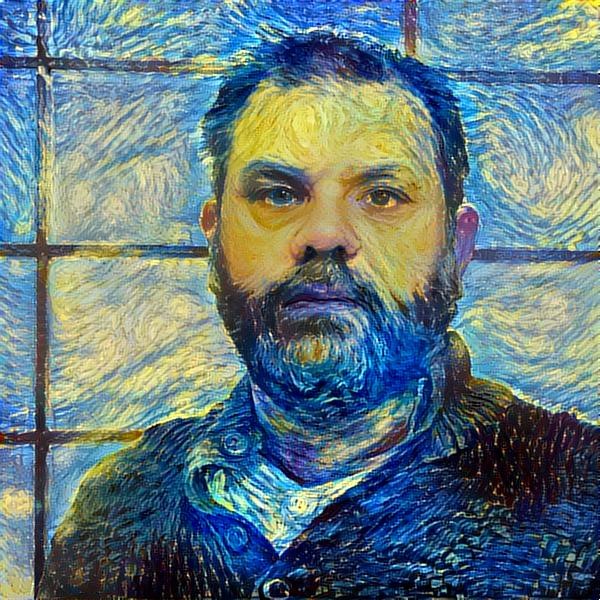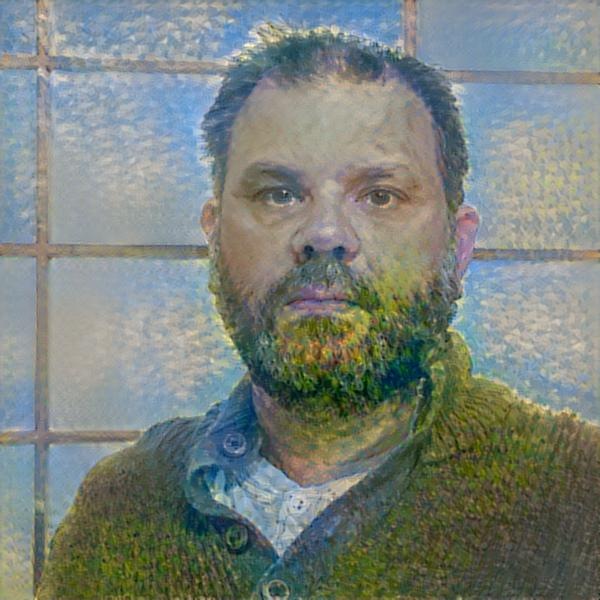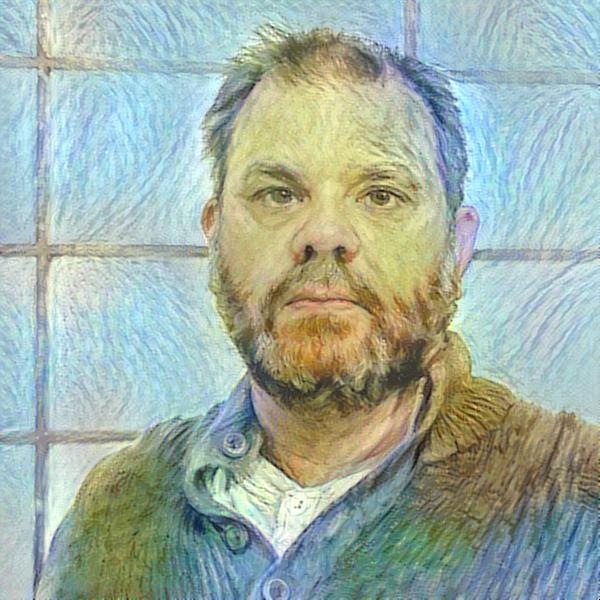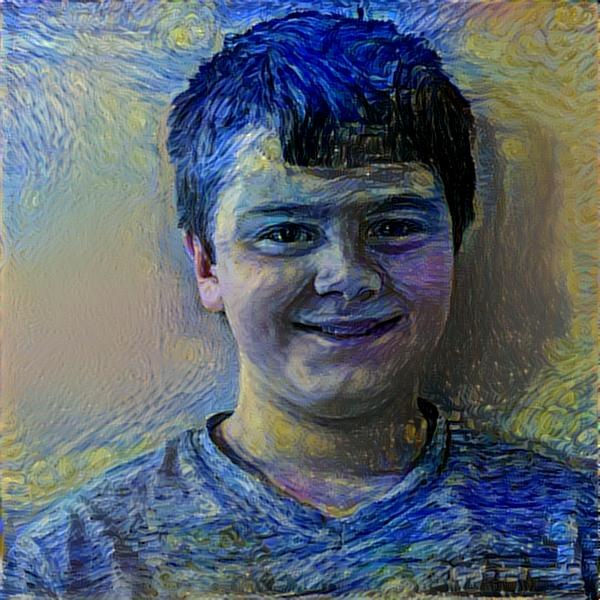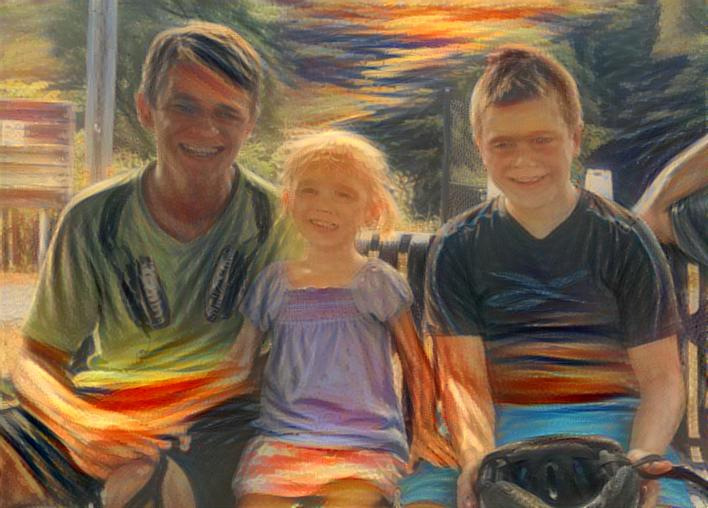Artonomo.us is my latest painting robot project.
In this project, one of my robots
1: Selects it’s own imagery to paint.
2: Applies it’s own style with Deep Learning Neural Networks.
3: Then paints with Feedback Loops.
An animated GIF of the process is below…
Artonomo.us is currently working on a series of sixteen portraits in the style above. The portraits were selected from user submitted photos. It will be painting these portraits over the next couple weeks. When done it will select a new style and sixteen new user submitted portraits. If you would like to see more of these portraits, or submit yours for consideration, visit artonomo.us.
Below are the images selected for this round of portrait. We will publish the complete set when Artonomo.us is finished with it…
Pindar
